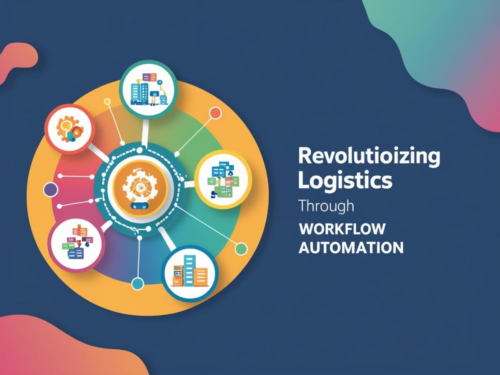GPT Models: Methods and Considerations
Training GPT models involves a meticulous process that ensures the model can generate meaningful and coherent text. The process begins with pre-training, where the model is exposed to vast datasets to learn the structure, grammar, and context of language. During this stage, the model identifies patterns and relationships between words, phrases, and sentences. Once pre-trained, the model can generate general text, but to make it more useful for specific tasks, fine-tuning is essential. Fine-tuning involves adjusting the model on a smaller, task-specific dataset, which allows it to learn particular nuances related to the use case. This step improves the model’s performance on tasks like question answering, text summarization, or sentiment analysis.
Another key aspect of GPT model training is transfer learning, where knowledge gained from the pre-trained model is applied to new tasks. By leveraging a pre-trained base, transfer learning reduces the need for large datasets and shortens the time required to train a model from scratch. This method enables GPT models to quickly adapt to domain-specific challenges, providing customized and accurate results with less computational effort. Considerations like managing overfitting and ensuring data diversity are vital to maintaining a model’s generalization capabilities, making fine-tuning and transfer learning both critical steps in the effective deployment of GPT models.
Insights Extraction: How GPT Models Analyze Data
GPT models are powerful tools that utilize advanced natural language processing techniques to effectively analyze both structured and unstructured data. Their ability to detect patterns and relationships within structured data, often found in databases and spreadsheets, allows GPT models to excel in tasks such as data summarization and predictive analysis. Organizations can harness these capabilities to extract valuable insights from large datasets, facilitating improved decision-making grounded in historical trends. Additionally, when dealing with unstructured data—such as text, images, and multimedia—GPT models showcase their proficiency in processing vast amounts of information. They can identify significant themes, sentiments, and anomalies, transforming raw data into actionable insights that enhance customer experiences and deepen understanding of market dynamics across various industries.
The adaptability of GPT models spans several sectors, including finance, healthcare, and marketing, enabling organizations to derive critical insights for informed decision-making. In the financial sector, these models can assess market sentiment and predict economic trends, while in healthcare, they improve patient care by extracting insights from feedback and medical literature. In marketing, GPT models empower brands to understand consumer behavior through the analysis of unstructured data, enabling more targeted campaigns and enhanced customer engagement. As indispensable tools for organizations aiming to fully leverage their data, GPT models are pivotal in driving strategic, data-informed decisions by extracting meaningful insights from a wide range of data sources.

Improving Decisions Using GPT-Powered Analytics
Utilizing GPT-powered analytics for decision-making taps into the advanced capabilities of the Generative Pre-trained Transformer (GPT) model to uncover valuable insights from a variety of datasets. GPT is particularly effective in analyzing unstructured data, such as text and images, by identifying complex patterns and trends. This enhances the decision-making process by automating tasks like data analysis and natural language processing, allowing organizations to extract actionable intelligence from intricate data sources.
Ensuring the accuracy of GPT-powered analytics requires continuous refinement, including fine-tuning model parameters, ongoing training, and validating outputs. This process helps maintain relevance and reliability. Fostering a data-driven decision-making culture is equally important, as it enables organizations to fully leverage GPT’s potential. By integrating cutting-edge technology and sophisticated analytics, companies across sectors like finance, healthcare, and marketing can make more informed, strategic decisions.
Impact on Startups, SMEs, and Large Enterprises
Exploring various avenues within this technology, many startups often begin by utilizing natural language understanding and generation capabilities to decipher the structure and significance of unstructured data. This serves as a popular starting point, given its applicability across a range of solutions and use cases. For fledgling companies embracing innovation, integrating generative AI models throughout an application can rapidly spark creativity, establish a competitive advantage, and introduce novel engagement strategies.
For SMEs, collaboration with service providers that utilize GPT models can optimize marketing strategies through sentiment analysis tools, enabling insights into customer feedback for tailored messaging and product offerings. Automation of tasks like content generation and document summarization can boost productivity and streamline operations for SMEs. Similarly, large enterprises can benefit from implementing GPT models to extract profound insights from vast amounts of unstructured data, enhancing decision-making processes and refining strategies in response to market dynamics and customer preferences. Ultimately, the incorporation of GPT models empowers businesses of all sizes to leverage AI-driven solutions for growth and competitiveness in today’s evolving business landscape.
Challenges and Considerations in Deploying GPT Models
Deploying GPT models presents challenges such as model bias, interpretability, and scalability. Mitigating model bias requires a thorough assessment of training data to eliminate biases and ensure equitable decision-making. Additionally, ensuring the interpretability of GPT models is crucial for building user trust, accomplished through techniques like attention mapping and model explanation frameworks. Addressing these challenges demands a concerted effort to prioritize diverse and unbiased training data and invest in interpretability-enhancing tools.
Scalability represents another key consideration, necessitating robust infrastructure and efficient resource allocation to handle the computational demands of deploying GPT models at scale. By proactively addressing these challenges, organizations can ensure that GPT deployments uphold fairness, transparency, and performance in real-world applications.
GPT Models Shaping Machine Learning Trends
The future trends of machine learning are closely intertwined with the evolving role of GPT models. As cutting-edge advancements continue to refine GPT models’ natural language processing capabilities, they are poised to play a pivotal role in driving the next wave of innovation in machine learning. These trends are expected to see GPT models further pushing the boundaries of language understanding and generation, enabling more nuanced and contextually accurate outputs.
Moreover, as GPT models become increasingly sophisticated, their impact on advancing machine learning applications across various industries is anticipated to be transformative. By spearheading advancements in natural language processing, GPT models are set to revolutionize how AI systems process, analyze, and generate human language, paving the way for more intelligent and adaptable machine learning solutions that have far-reaching implications for the future.






